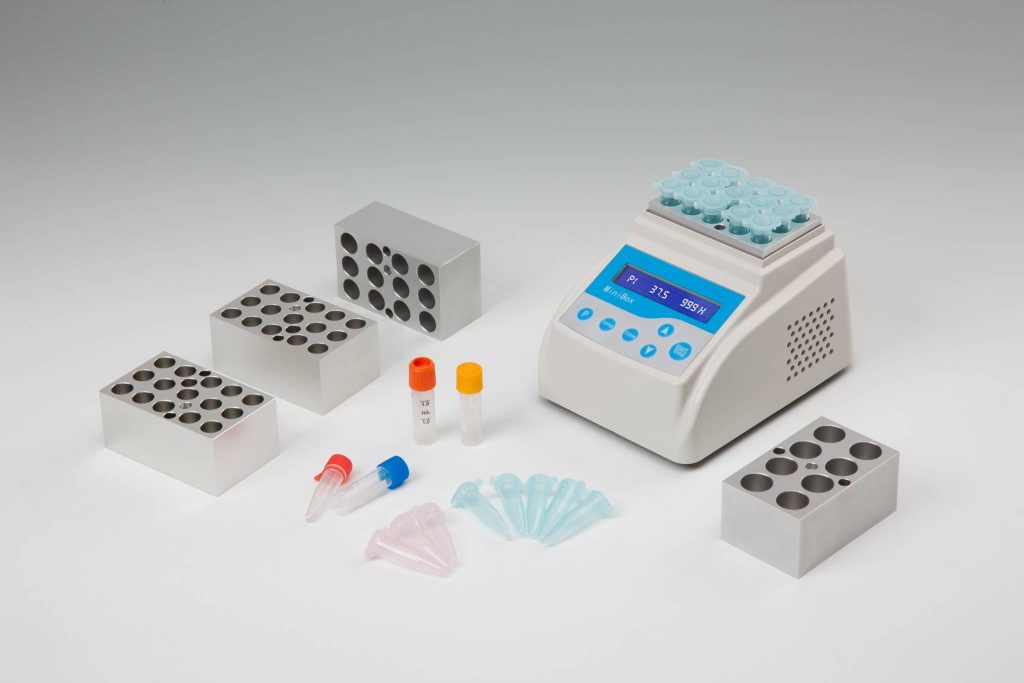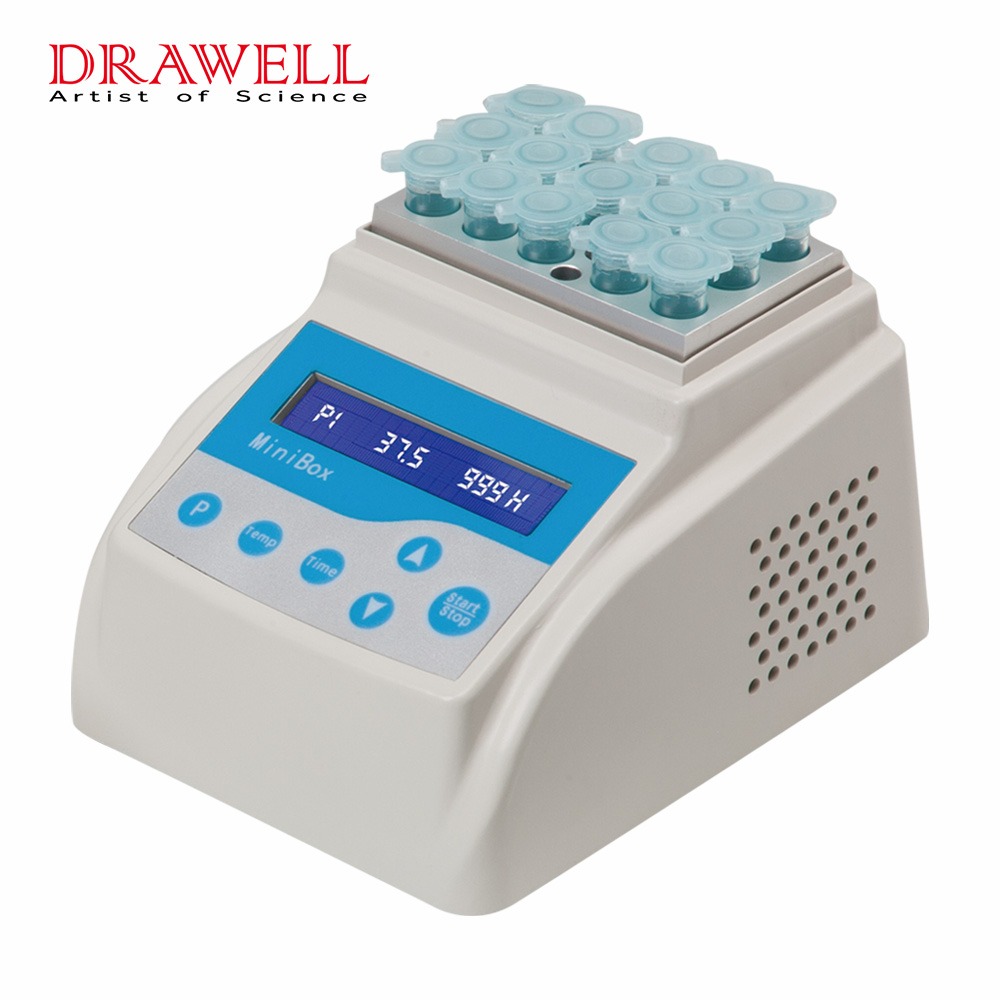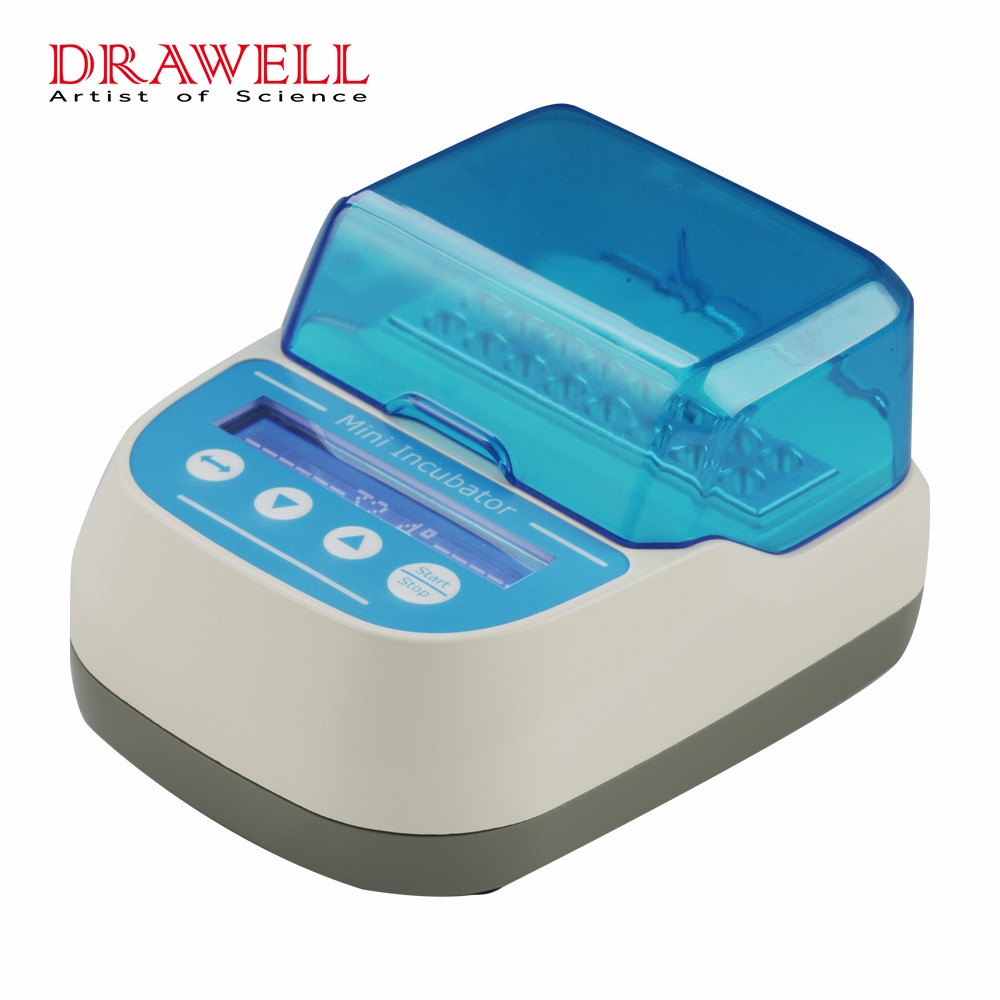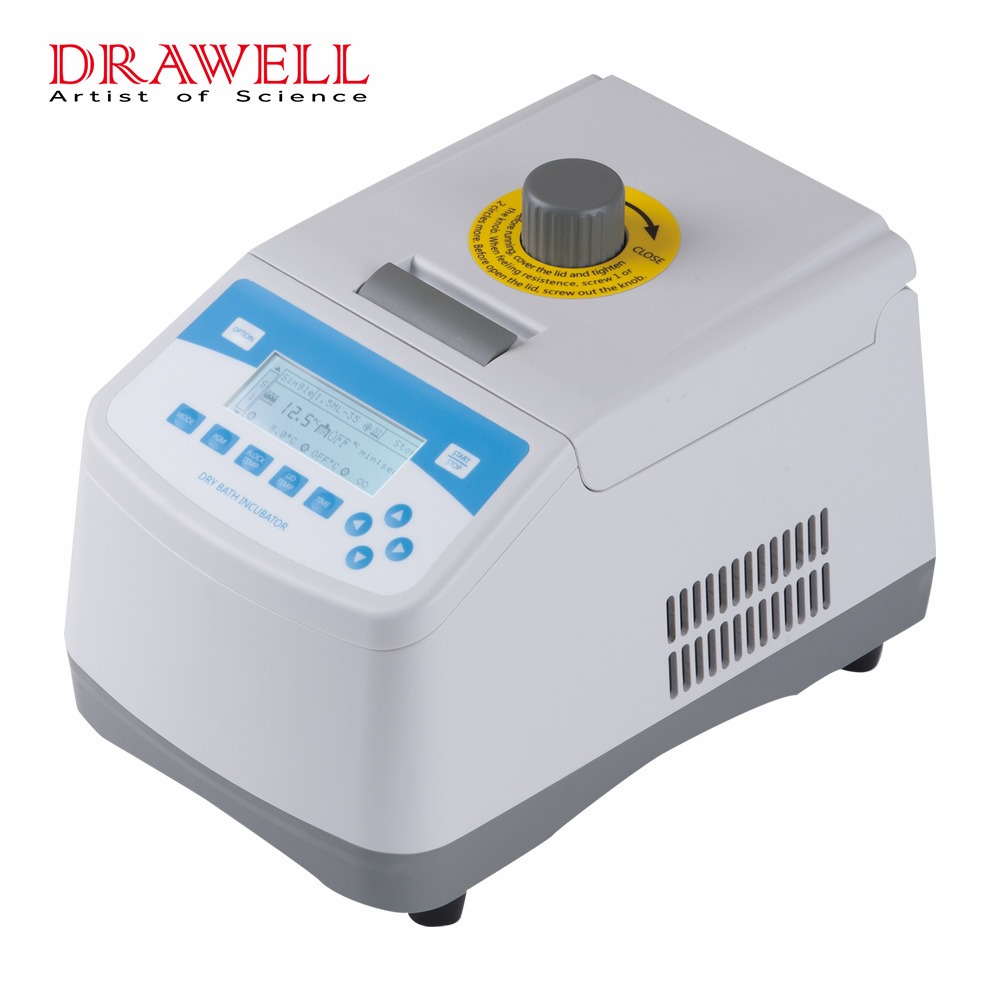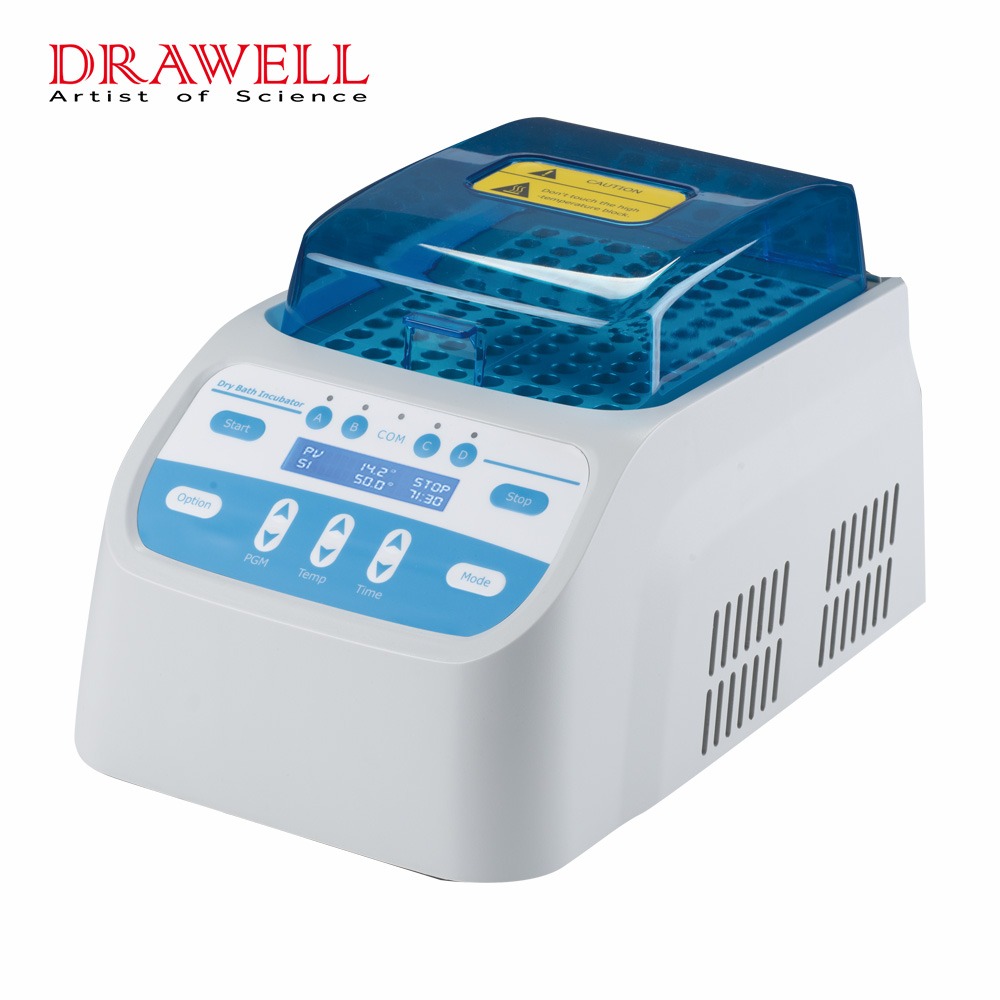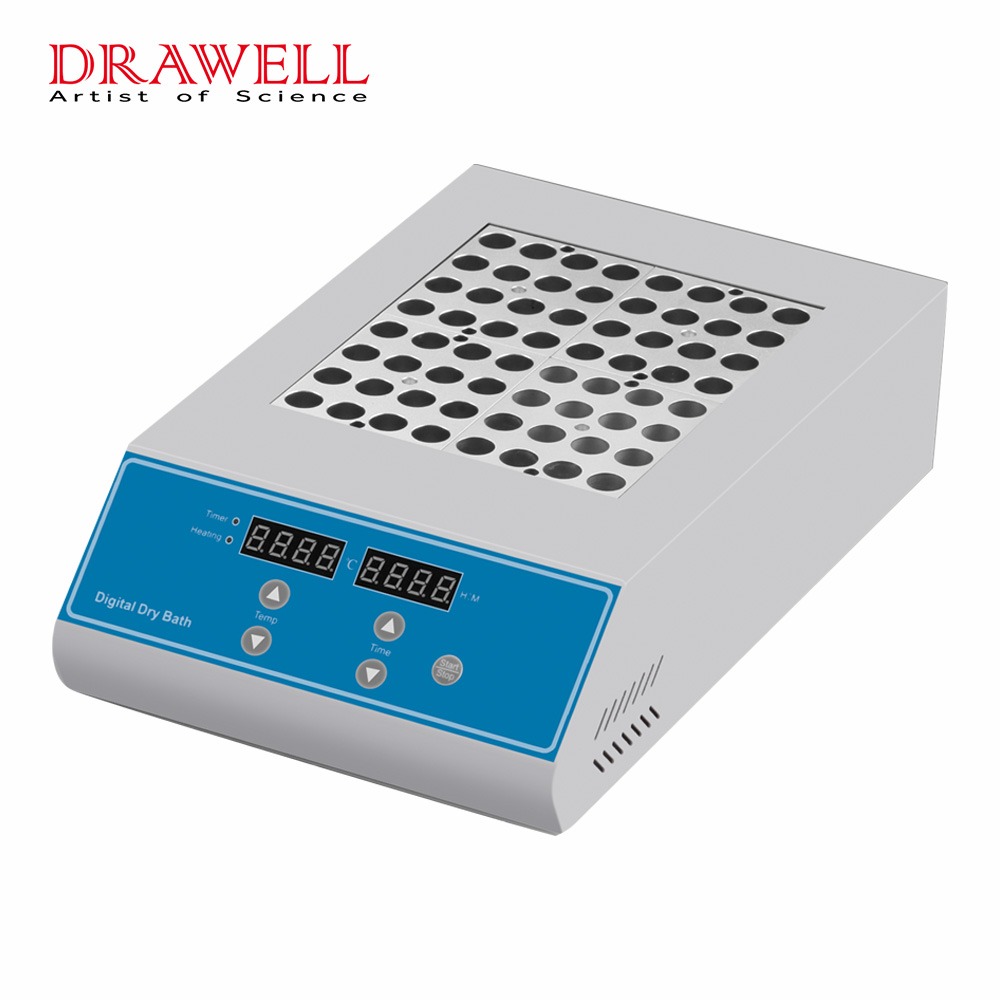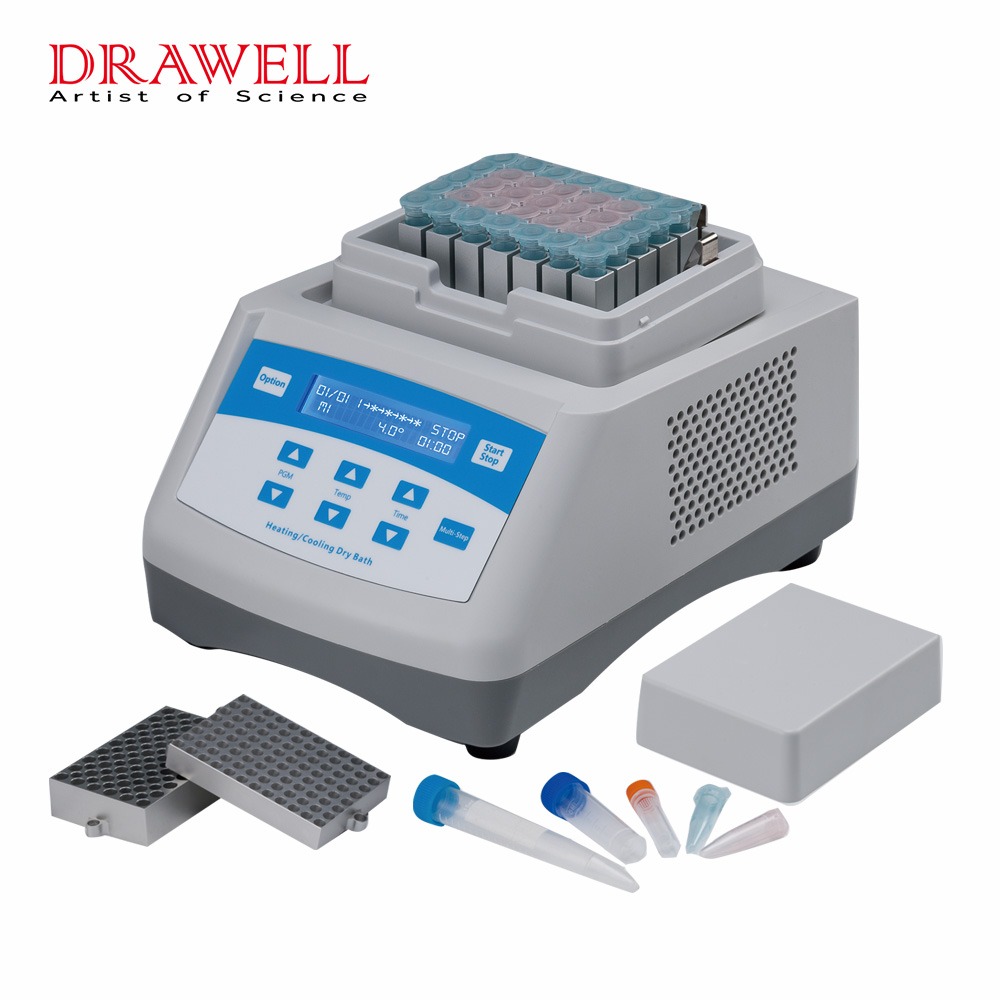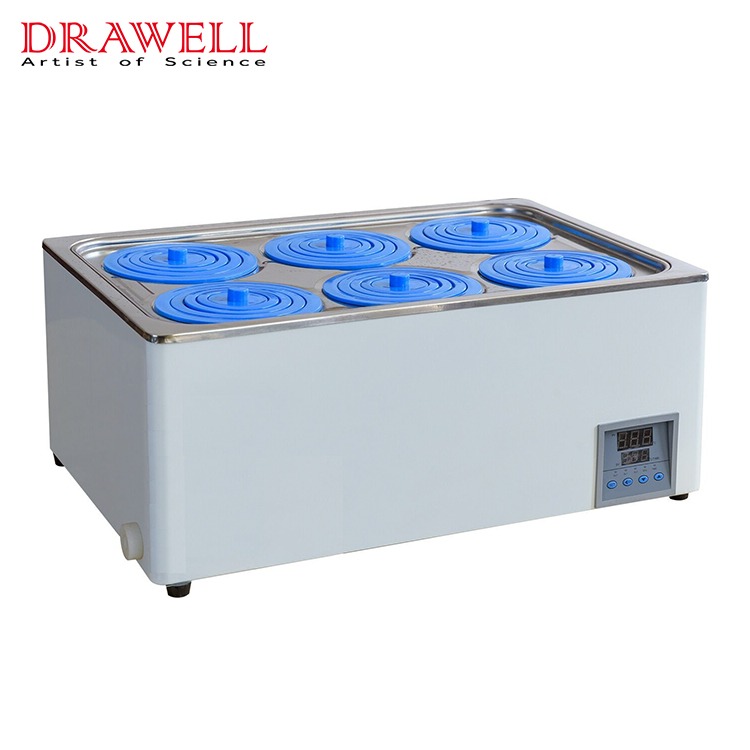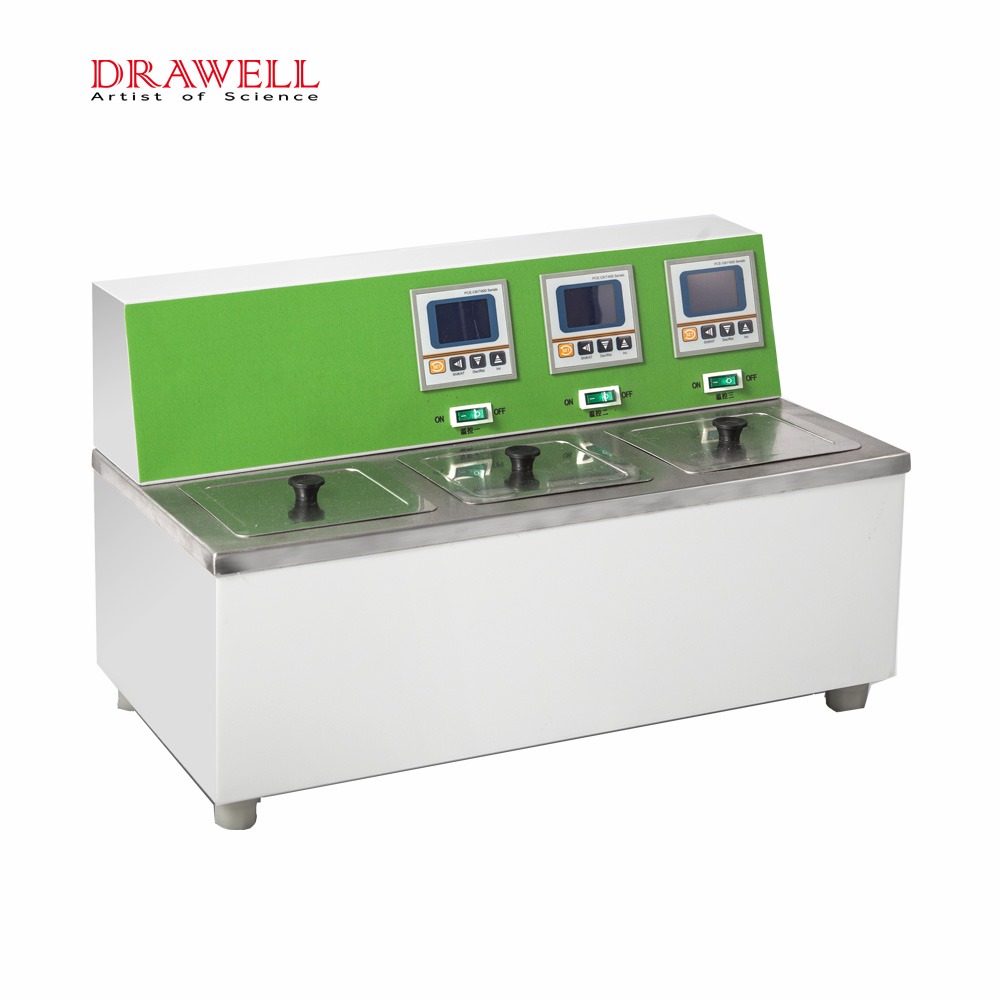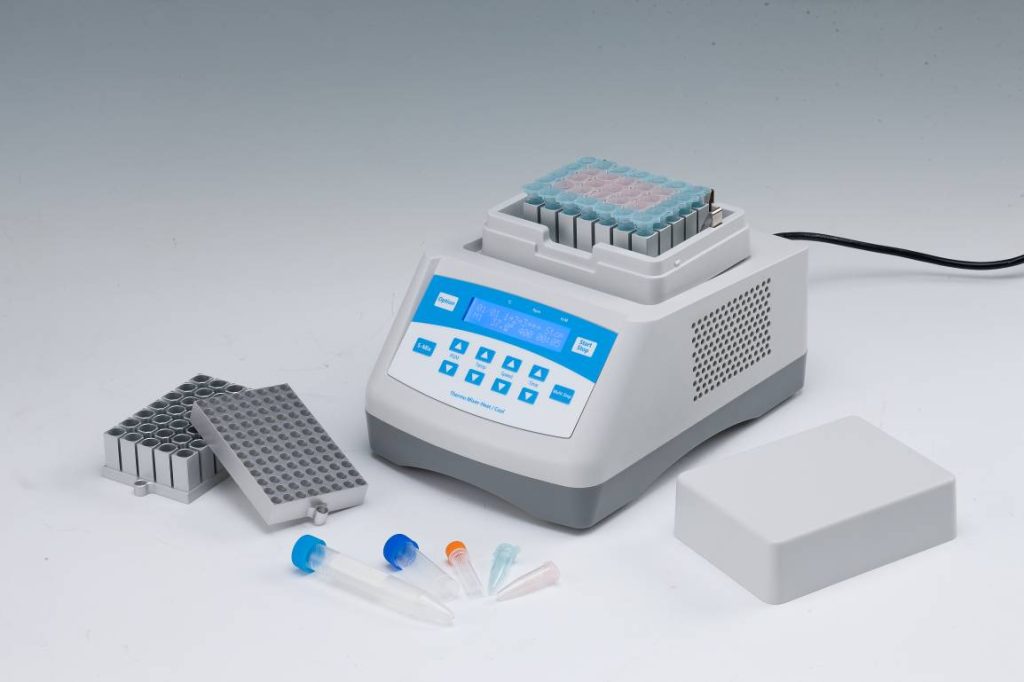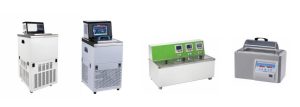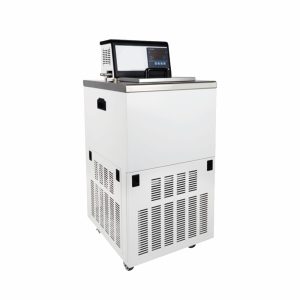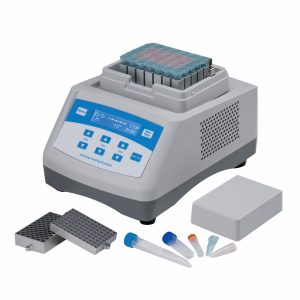In laboratory research, precise temperature control is essential for ensuring accurate and reproducible results. Two commonly used heating devices, dry baths and water baths, serve this purpose but function in distinct ways. Each has specific advantages and limitations, making them suitable for different applications. Understanding the differences of dry baths vs. water baths is essential for selecting the best option for laboratory workflows.
What is Dry Bath and Water Bath?
A dry bath, also known as a heat block, utilizes a solid metal block with wells designed to hold test tubes or vials. Heat is transferred directly to the sample through conduction, providing uniform and stable temperature control. Dry baths can achieve higher temperatures, often exceeding 100°C, making them ideal for applications requiring precise and consistent heating.
One of the primary advantages of dry baths is the elimination of contamination risks, as there is no contact with an external liquid medium. This makes them particularly useful in molecular biology, pharmaceutical research, and clinical diagnostics, where sample purity is a critical factor. Additionally, dry baths require minimal maintenance, as there is no need to replace liquids or clean external components frequently.
Water baths operate by using heated water to transfer heat indirectly to the samples submerged within them. This method ensures uniform temperature distribution and is particularly effective for applications where gentle heating is necessary, such as enzymatic reactions, microbiological culturing, and chemical processes requiring controlled heating without direct exposure to a heating element.
While water baths provide excellent thermal stability, they also require regular maintenance to prevent contamination from microbial growth. Evaporation can also be a concern, necessitating water level monitoring to ensure consistent performance. Despite these challenges, water baths remain indispensable for handling a wide range of sample types and container sizes in laboratories.
Key Differences Between Dry baths vs. Water Baths
| Feature | Dry Bath | Water Bath |
| Heating Medium | Dry metal block | Heated water |
| Temperature Control | Precise and uniform | Stable but may fluctuate slightly |
| Temperature Range | Typically up to 150°C or more | Limited to ~100°C (boiling point of water) |
| Heating Speed | Faster heat transfer | Slower due to water’s thermal properties |
| Sample Contamination Risk | Minimal (no liquid exposure) | Higher (due to possible waterborne contamination) |
| Evaporation Risk | None | Yes, especially at high temperatures |
| Maintenance | Low (no liquid to replace) | Requires regular cleaning and water replacement |
| Flexibility | Limited to compatible tube sizes | Can accommodate various container types |
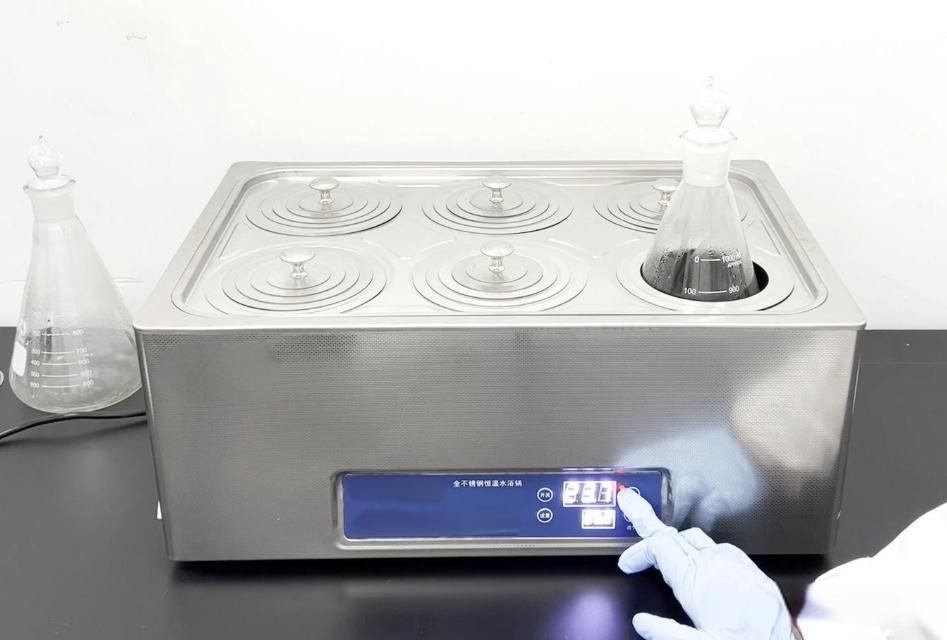
Applications of Dry Baths in Laboratories
- Molecular Biology and Genetic Research
In molecular biology, dry baths play a critical role in processes such as DNA amplification, RNA extraction, and protein analysis. They are commonly used in PCR (polymerase chain reaction) sample preparation, where temperature consistency is crucial for successful amplification. Additionally, they aid in enzyme digestion and restriction fragment analysis, ensuring optimal reaction conditions.
- Clinical and Diagnostic Laboratories
Medical and clinical diagnostic laboratories rely on dry baths for various sample incubation processes. They are used in blood serum analysis, coagulation studies, and enzymatic reactions, where precise temperature control is necessary for accurate test results. Their contamination-free heating method is particularly beneficial for handling biological samples, as it minimizes the risk of cross-contamination.
- Pharmaceutical and Biochemical Research
In pharmaceutical research, dry baths are used for drug stability testing and compound synthesis. Many biochemical assays require controlled heating, and dry baths provide the necessary conditions for reactions involving small volumes. They also play a role in incubating chemical samples during drug formulation studies.
- Industrial and Chemical Applications
Beyond research and clinical settings, dry baths are used in industrial laboratories for material testing and quality control. They are employed in petroleum and environmental analysis, where temperature-dependent chemical reactions are studied. In addition, they support the heating of reagents and solvents in chemical processing industries.

Applications of Water Bath in Laboratories
- Molecular Biology and Biochemical Research
Water baths play a crucial role in molecular biology and biochemical research, where precise temperature control is required for enzymatic reactions and sample incubation. They are commonly used for DNA denaturation, hybridization, and protein coagulation. Additionally, they are essential in enzyme activity studies, such as maintaining optimal conditions for restriction enzyme digestion and polymerase chain reaction (PCR) processes.
- Microbiological and Cell Culture Studies
In microbiology and cell culture laboratories, water baths provide the stable temperatures necessary for bacterial and fungal incubation. They are widely used for microbial culture preparation, where maintaining a specific temperature range ensures optimal growth conditions. Water baths are also used for warming culture media and reagents before experiments.
- Clinical and Diagnostic Applications
Medical and diagnostic laboratories utilize water baths for serum sample incubation, coagulation studies, and other biochemical tests. In pathology and histology labs, water baths help with tissue sample preparation and paraffin embedding processes. They also assist in defrosting and thawing biological samples in blood banks and medical research facilities.
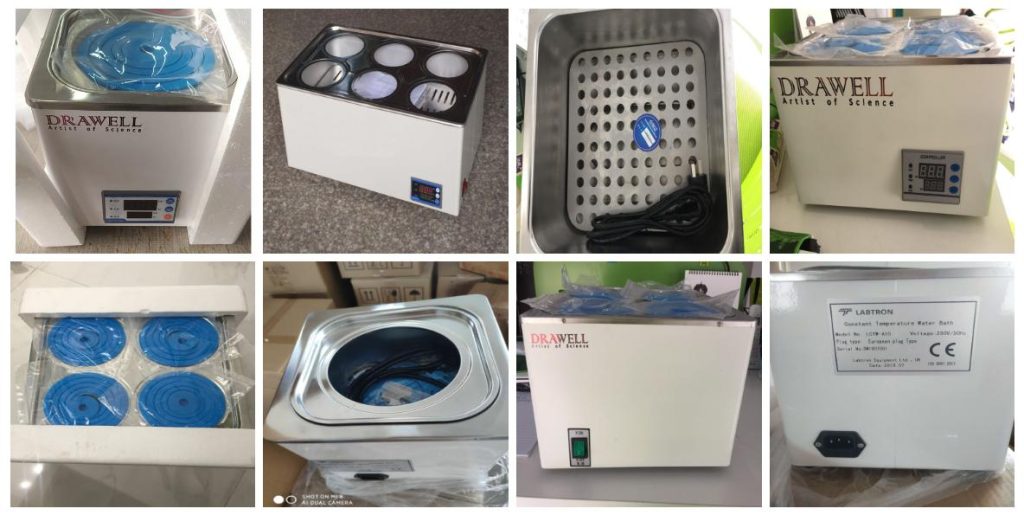
- Chemical and Pharmaceutical Research
In chemical and pharmaceutical laboratories, water baths provide controlled heating for solubility studies, reagent preparation, and chemical reaction acceleration. They are particularly useful for evaporating solvents, crystallization processes, and conducting stability testing of pharmaceutical formulations under controlled conditions.
- Food and Beverage Testing
Water baths are widely used in food and beverage testing laboratories for quality control and safety assessments. They facilitate microbial testing, enzyme activity studies, and thermal processing evaluations. The ability to heat samples evenly without causing direct exposure to a flame or heating element makes water baths ideal for food product analysis.
- Industrial and Environmental Applications
Water baths also find applications in industrial and environmental testing laboratories. They are used in petrochemical analysis, wastewater treatment studies, and soil sample testing, where maintaining specific temperature conditions is crucial for accurate measurements. Environmental labs rely on water baths for testing chemical oxygen demand (COD) and biological oxygen demand (BOD) in water quality assessments.

Choosing Between Dry Baths and Water Baths
- Temperature Control and Stability
Water baths provide uniform heat distribution due to the thermal conductivity of water, making them ideal for applications requiring stable and gentle heating. They are particularly suitable for enzyme reactions, microbiological incubation, and sample thawing, where maintaining precise temperatures is crucial. Dry baths, on the other hand, use direct conduction heating and are capable of reaching higher temperatures. They are preferred for applications such as DNA denaturation, protein incubation, and biochemical reactions that require rapid and precise heating.
- Sample Compatibility and Contamination Risks
Water baths are best suited for liquid-based samples, as the surrounding water ensures even heating. However, they require regular maintenance to prevent microbial growth and contamination. Dry baths eliminate the risk of waterborne contamination since they do not use a liquid medium. This makes them ideal for sensitive applications, such as molecular biology and clinical diagnostics, where preventing cross-contamination is a priority.
- Maintenance and Durability
Water baths require frequent cleaning and water level monitoring to avoid evaporation and microbial buildup. Some models may also need anti-fungal additives to maintain hygiene. Dry baths, in contrast, require minimal maintenance since there is no water evaporation or contamination. Their solid-state heating design also ensures longer durability with fewer operational concerns.
- Flexibility and Sample Volume
Water baths accommodate multiple sample types, including glassware, test tubes, and reagent bottles, making them versatile for various laboratory processes. They can also be used for indirect heating of large volumes of liquids. Dry baths, however, are designed for smaller, tube-based samples and require specific inserts to fit different vial sizes. While dry baths offer precision for individual samples, water baths provide more flexibility for handling diverse sample containers.

Final Thoughts
When to Choose a Dry Bath:
- If contamination is a concern (e.g., biological samples or molecular biology experiments), a dry bath is preferred.
- For higher temperatures beyond 100°C, a dry bath is the better option.
- Needing fast heating and minimal maintenance, choosing a dry bath is better
When to Choose a Water Bath:
- If precise and uniform heating for liquid-based samples is needed, a water bath is more suitable.
- If working with large or irregularly shaped containers, a water bath provides more flexibility.
- Requiring precise, uniform temperature control, a water bath is a better choice.
Both dry baths and water baths are essential in laboratories, each with unique strengths. The choice depends on factors such as temperature precision, contamination risks, sample type, etc. Comparing dry baths vs. water baths, allows laboratories to select the best heating method for specific applications, ensuring efficiency and accuracy in experiments.
Related Products
Get Quote Here!
Latest Posts
What Next?
For more information, or to arrange an equipment demonstration, please visit our dedicated Product Homepage or contact one of our Product Managers.

